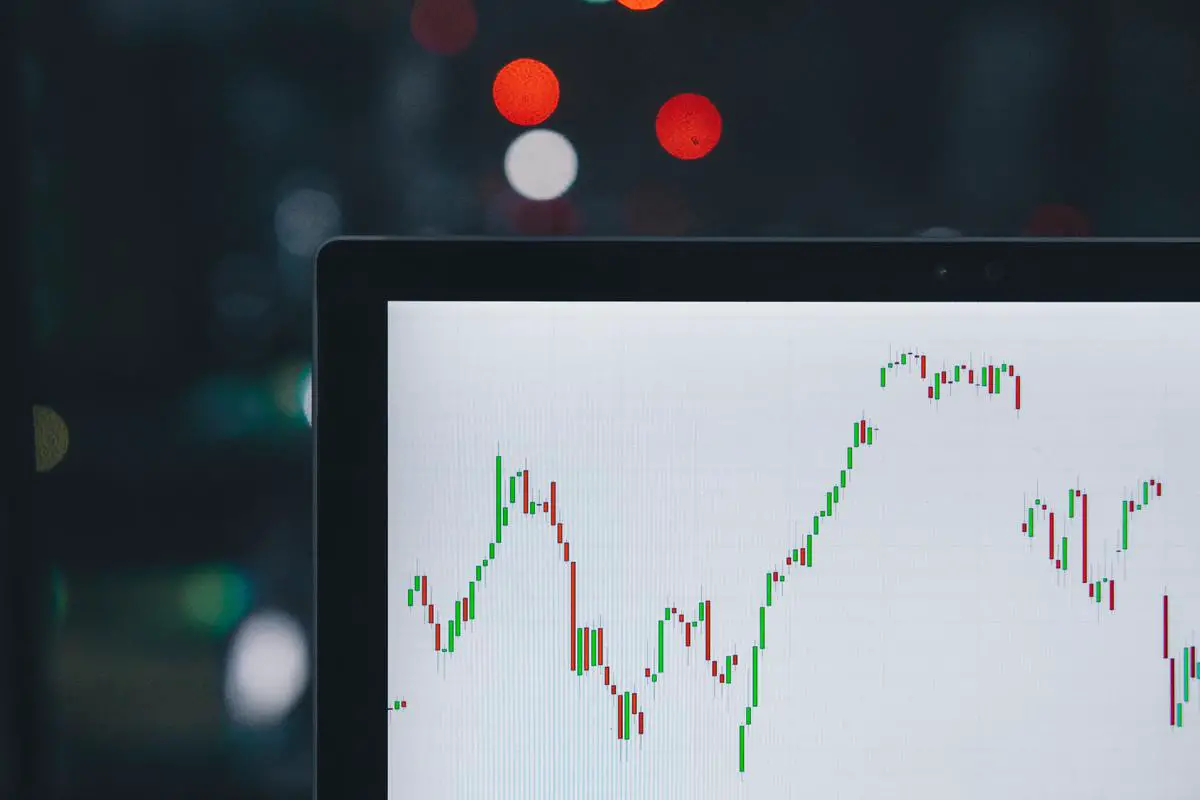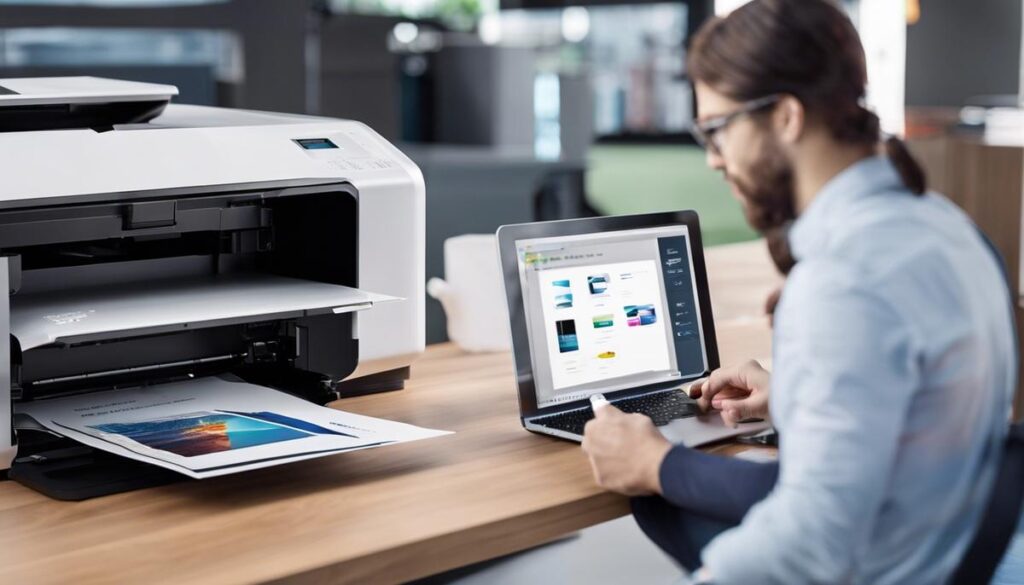In the dynamic world of technology, one area that has noted considerable advancements is the domain of printers. As an integral part of home, school, and business environments, it’s essential to comprehend updates about the latest printing technology trends, as well as in-depth reviews of top printer models in the market. A clear understanding of these aspects proves invaluable, particularly when it comes to making an informed purchase decision. This article addresses multiple facets ranging from ink technology, eco-friendly solutions, and laser advancements to the nuances of cost analysis and ease of use in modern printers. With constant progression in printer technology, the information outlined here provides a comprehensive perspective for enthusiasts and hobbyists seeking to expand their knowledge base.
Latest Printer Technology Trends
Fresh off the Press: Latest Technological Trends in Printers
As we delve further into this fascinating digital era, technology continues its relentless surge forward in virtually every sector, and the unpretentious printer is no exception to this rule. In the age of automation and smart technology these seemingly mundane office tools are not being left in the dust. Instead, they are riding the wave of innovation with some groundbreaking recent trends that are shaping the industry and transforming our printing experience.
Firstly, leaning into the smart tech revolution, the phenomenal rise of Voice-Activated Printers certainly merits attention. Similar to smart home devices, these highly modern printing machines facilitate printing commands with a simple spoken phrase. Amazon’s Alexa, Google Assistant, and Microsoft’s Cortana are among the voice-activated interfaces facilitating these functions, offering both convenience and efficiency, with a somewhat futuristic flair.
Secondly, the advent of 3D Printing technology has completely transformed the printing game. Still considered relatively new, this technology is creating waves, allowing for the creation of solid objects from a digital file. Although currently frequently used for prototypes or model structures, innovations continue as it progresses steadily toward becoming a common household utility.
Ever heard of mobility in printing? Next on this intriguing list is Mobile Printing Technology. In our fast-paced world where immediate access is the norm, smartphones have become our main workstations. Mobile printing features support this trend, allowing for instant printing of documents straight from a smartphone, tablet, or any other handheld device remotely. No more waiting to connect a laptop or desktop!
Next up, the IoT (Internet of Things) movement has also reached the realm of printing. IoT-Enabled Printers are now increasingly common. By being connnected to the internet, they offer a plethora of features like sending a document to print from anywhere in the world or receiving remote alerts regarding low ink levels.
Lastly, Sustainable Printing technology is gaining traction, aligning with global movements for environmental conservation. Manufacturers have begun creating energy-efficient and eco-friendly printers that use less energy, release fewer emissions, and promote recycling of cartridges which drastically reduce environmental impact.
Rapid advancements in technology will continue to impact our lives and reshape industries, the world of printing being no exception. With a host of novel trends emerging on the scene, printers are no longer the humdrum office workhorse. They’re morphing into high-tech, smart devices that make our lives just that little bit easier every day. So, next time you think of printers, envision a modern tech marvel revolutionizing productivity and sustainability one piece of paper at a time.

In-depth Review of Top Printer Models
Discover the Top Printer Models: Cutting-Edge Printing Technology Revealed
In an era synonymous with rapid technological advancements, the realm of printing technology is no exception. While voice-activated, sustainable, and 3D printers are groundbreaking in their own arenas, there are even more innovations breaking through the barriers these days. Here are some of the top-notch printer models amalgamating the very latest in technology.
- LaserJet Pro M15w by HP: Often lauded as the smallest laser printer in its class, this compact powerhouse not only saves your workspace but rivals larger models with its impressive features. It effortlessly fuses mobility with efficiency, where you can print directly from your smartphone or tablet. It also comes equipped with LED printing technology for faster printing speeds and higher precision.
- EcoTank ET-3760 by Epson: Sustainability is not just a buzzword anymore; it’s a necessity. Epson addresses this with its unique cartridge-free EcoTank system that substantially reduces waste. The ET-3760 offers superior savings with up to 2 years of ink included in the box and easy-to-fill, supersized ink tanks.
- imageCLASS MF743Cdw by Canon: Of considerable note in the area of all-in-one printers is Canon’s imageCLASS MF743Cdw model. Incorporating IoT technology, it enables users to connect to their preferred cloud storage services directly, thus simplifying the tedious process of scanning and storing documents.
- Phaser 6510/DNI by Xerox: For color printing, few rival the Xerox Phaser 6510/DNI. It utilizes Xerox’s advanced EA Toner formulation, which has been re-engineered for enhanced dot reproducibility and less waste toner. With this tech in tow, users can expect brilliant, precise color, making it perfect for high-quality presentations or brochures.
- SureColor P800 by Epson: The world of professional photo printing is personified by the Epson SureColor P800. With its 9-color UltraChrome HD ink set, it redefines the boundaries of color accuracy in the professional printing field.
- MakerBot Replicator +: Blurring the line between reality and imagination, this model leverages 3D printing technology to transform virtual designs into tangible prototypes. Ideal for educational institutions or design agencies, it offers a hands-on approach to learning and creating.
In conclusion, these printer models combine some of the latest advancements to redefine what’s possible in the realm of printing technology. Whether it’s superior color accuracy, enhanced eco-friendly practices, or turning ideas into 3D prototypes, this cutting-edge lineup has something for everyone’s needs.

Photo by ajeetmestry on Unsplash
Printer Cost Analysis
Analyzing the Cost-Effectiveness of a Printer – A Tech Enthusiast’s Approach
Choosing a printer is no small task, particularly when one considers the realm of tech-savvy, efficiency-seeking enthusiasts. When breaking down the cost-effectiveness of a printer, there are several key factors to scrutinize: initial cost, cost per page, speed, and functionality.
Firstly, the initial cost of the purchase is a tangible factor. Prices can range broadly, based on make and model, so a quick comparison of upfront costs is crucial. However, the savvy tech enthusiast knows that the initial cost is just the tip of the iceberg when evaluating the long-term cost-effectiveness.
Cost per page, a crucial yet often overlooked aspect, dives into the operational expenses of each printed page. This is primarily driven by the cost of ink or toner cartridges. While printers like the EcoTank ET-3760 by Epson have higher upfront costs, they yield lower cost per page due to their refillable ink tanks. Inversely, some inexpensive printers have high cartridge costs, turning them into financial drains over time.
The speed of operation, measured in pages per minute (PPM), weighs heavily on the user experience and operational efficiency. High PPM machines such as the imageCLASS MF743Cdw by Canon or the Phaser 6510/DNI by Xerox can drastically reduce waiting times for large print jobs.
Examining functionality means evaluating the extra features of a printer, such as scanner or facsimile capabilities, duplex printing, and the number of paper trays. For example, an all-in-one machine like the LaserJet Pro M15w by HP, which concurrently handles printing, scanning, and copying, can be a boon for a tech enthusiast looking for a streamlined workspace.
Another critical aspect to consider is durability and brand reliability. Time spent on maintenance and parts replacement can significantly impact the overall cost-effectiveness of a machine over its lifespan.
In conclusion, assessing the cost-effectiveness of a printer is more than crunching numbers. It entails considering the total ownership cost, the printer’s operational efficiency, functionality, and the reliability of the brand. True value lies not only in the product but also in its ability to meet the demands of tech-savvy, efficiency-oriented individuals.

Printer Connectivity and Compatibility
Considerations for Printer Connectivity and Compatibility
In this evolving age of modern technology, it’s increasingly important to understand the connectivity and compatibility aspects of today’s printers. As more technology goes wireless and devices become more interconnected, the printer you select should support these advancements seamlessly.
One primary factor to consider is the printer’s connectivity. As technology becomes more centralized, wireless printing options have become essential. Aside from Wi-Fi, some printers also offer Ethernet and USB interfaces. If mobility is a priority, look for a printer compatible with AirPrint or Google Cloud Print to print wirelessly from your phone or tablet.
Another vital consideration is the operating system compatibility. Always ensure that the printer supports the operating system of the device you will be using. Whether it’s a Windows PC, MacOS system, or a Linux distro, the printer should offer the necessary drivers and software.
For businesses, network compatibility is crucial. The printer should integrate into the existing network smoothly without the need for major overhauls or changes in infrastructure. Ensure the printer supports key protocols such as SNMP, FTP, or HTTP, depending on your specific needs.
Moreover, compatibility with printing apps also plays a significant role, especially for businesses relying on particular software for organization or specific operations. Examples of such software include Adobe PostScript or PCL for high-quality graphic renditions or documentation software for healthcare or law firms.
In the era of the Internet of Things (IoT), the printer’s compatibility with IoT devices should also be considered. This will allow it to integrate better with a smart office setup, enhancing workflow and productivity.
Lastly, consider device compatibility, including storage devices like USBs or SD cards, or direct printing from digital cameras via PictBridge. Additionally, if your organization heavily relies on a particular device such as a tablet or smartphone, ensure the printer supports mobile printing without the need for a computer intermediary.
In conclusion, connectivity and compatibility are both critical considerations when choosing a printer. Clear and concise research prior to purchasing can result in a seamless tech experience, promoting efficiency and satisfaction with your choice. Remember, a printer is not just a tool; when chosen correctly, it can elevate your tech lifestyle or business operations significantly.

Automation and Ease of Use in Printers
When it comes to the world of printing, we’re living in an era of ease and efficiency. The magic wand behind this transformation? Automation. Modern printers, armed with automated features, are changing the rules of the game and making technology work harder so you don’t have to. Today, we deep-dive into how automation enhances the smooth functioning of our printers, so sit tight and prepare to be amazed.
One groundbreaking innovation is automated paper handling. With the inclusion of multiple paper trays and auto document feeders (ADF), printers now handle everything from legal documents to envelopes, greeting cards to heavy stock paper, sans the hassle of manual setup. It automates an otherwise time-consuming process and eliminates human error, thereby enhancing productivity.
Automation has also addressed the pesky issue of running out of ink at inopportune moments via smart reordering systems. Through Wi-Fi connectivity and predictive analytics, these printers monitor ink levels and automatically order fresh supplies when running low. Automation features like HP’s Instant Ink, for example, foresees when you’ll need new cartridges and delivers them to your door before you run out.
Next up, automatic two-sided or duplex printing, can reduce paper usage by up to 50%. The function allows for printing on both sides of the paper without the need for manual flipping, ensuring efficient use of resource and time. This is particularly useful for businesses with high volume printing needs. Some printers like the Brother HL-L2395DW even offer automatic two-sided scanning and copying.
Another game-changing feature is the automated preventive maintenance. Printers like Muse Laser Engraver and Cutter, for instance, come equipped with a smart diagnostic system that can automatically detect and troubleshoot potential problems. This proactive measure reduces downtimes and increases the overall life span of your printer.
From automated paper handling to smart reordering systems to automated preventive maintenance, modern printers are taking efficiency to a whole new level. The culmination of these automated features leads to an increased lifespan, reduced waste, and improved productivity, essentially making printers customer-friendly and attuned to your needs.
When one combines the power of automation with innovative printing technology, the result is a win-win scenario for all – whether you’re an enterprise with a high volume of printing needs or a photography enthusiast demanding high photo print quality or a home user looking for convenience. Automation is the power tool that is helping drive the future of printing technology.
In this technologically advanced age, “work smarter, not harder” couldn’t ring more true – and automated printers have taken up the mantle to ensure that becomes a day-to-day reality. Expect to see more automation, more efficiency, and more user-friendly features in printers of the future, as technology continues to leap ahead, taking mankind along on its remarkable journey.

Diving deep into the realm of printer technology, this discourse has examined key aspects of modern printers including 3D printing, cloud tech advancements, and greener printing solutions. Moreover, by providing an intricate understanding of top models’ features and costs, it aims to offer readers vital tools for making nifty comparisons. Examining connectivity options and compatibility is just as pivotal as understanding the role of automation in enhancing efficiency and user experience. Equipped with this knowledge, prospective printer users or tech enthusiasts can operate with a deeper understanding of the printing world’s intricate details, thereby comprehensively preparing themselves for market trends and developments that lie ahead.
Originally posted 2024-01-02 03:12:53.




